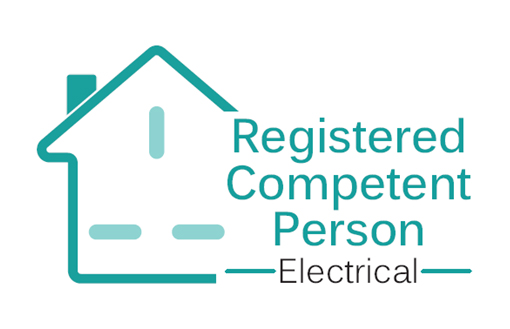Full Circuit Solutions E-Book:
Everything You Need To Know About Home Rewires
Introduction to Home Rewires
Having Your Home Rewired can be considered major renovation works and with that being the case, we strongly believe that careful thought and consideration should be given to your project.
At Full Circuit Solutions, we want you to be as informed as possible on the rewiring process. We have found through researching with our own customers that the more informed you are, the better the result for everyone involved.
We always recommend rewiring to be carried out by not only a professional electrical contractor but an electrical contractor whom regularly works within the rewiring industry.
Its important to remember that not all electricians or electrical contractors have the same background, working experiences and specialties, so ensuring that you employ a contractor who is well versed and regularly works within the rewiring sector is the first important tip we can provide.
In this professional’s guide, we will give you a clear understanding of what to consider when rewiring a house and the best practice to follow. Discover the signs that indicate a house needs rewiring and what a rewire involves. Learn what Electrical Installation Condition Reports are and the most up to date wiring regulations.
Part 1. Getting started – How do you know you need a rewire
Age
There's lots of ways to find out if your home needs a rewire, and we will discuss some of them below. The first sign is age. As per the NICEIC recommendation, (the uk’s most prominent and foremost electrical competent person governing scheme), strong consideration should be given to a home rewire if the electrical system is over 30 years old. Although it may not be essential, or necessary at all, if you can not prove that regular maintenance has been completed on the installation to ensure its safety, a rewire may be a good option for you.
Electrical Installation Condition Report
Another great way to find out if your property needs to be rewired is to have an electrical installation condition report carried out. An electrical installation condition report is a document that can be produced by an electrician who is qualified in the periodic inspection and testing of in service electrical installations. This report comes in three parts. The first part documents the system details, type and other safety parameters. The second part of the report is a tick sheet with over 100 inspections that the engineer must fill out. The final part of the report is the circuit chart and the measured readings of the circuits. This report in its entirety will identify any current or potential issues or safety concerns of the system and the electrician can advise you on whether a rewire is necessary. The average cost of an electrical installation condition report on a standard 3 bedroom house is somewhere between £200 - £300 and should take somewhere between 3-6 hours to complete.
Please beware of budget EICRs, they are often a scam. If something is too good to be true, it usually is! Anyone that is offering EICRs for less than £120 is prying on the fact that you don’t know exactly what an EICR entails and how long it should take. – If you’d like to learn more about what to look for when employing an electrician to complete an EICR click here to be taken to a page like this where we have produced lots of very helpful content to ensure you are as informed and educated on the topic as possible.
Major Home Improvements
Another reason you may be considering a rewire is that you are planning to redecorate the house or you are having other major building works completed like a loft conversion, a kitchen upgrade or an extension.
If you are planning to redecorate your house, we would most certainly advise that you, at the very least, have an electrical installation condition report completed. The last thing that you want to do is have your bedroom and lounge redecorated only to find out a year down the line that you now need to rewire and all your hard work is going to be put to waste.
We find that the perfect time to rewire a house is alongside other major building works. Whilst you are having an extension, a conversion or Kitchen and bathroom upgrades, your home can be quietly rewired in the background ensuring that upon completion of your project, your homes electrical system and its safety features are bought entirely up to todays high standards.
Other tell tale signs to look out for that may indicate its time to rewire
- The consumer unit trips out regularly, and fuses or bulbs blow.
- There’s a crackling or buzzing noise from electrical accessories, switches, or sockets.
- The electrical wiring is covered in black rubber, fabric, or lead.
- There are signs of burning, such as discolouration around plugs and sockets or a burning smell.
- Lights are constantly flickering, and bulbs need to be changed often.
- There are switches made of cast iron.
- There’s no labelling on the consumer unit.
- The consumer unit has a wooden back.
- Sockets are broken or cracked.
- Sockets have rounded plug entries instead of 3-pin entries.
- There are less than two plug sockets in each room.
- Plugs get very hot.
Part 2: What Are The Different Types Of Rewire
We break Rewiring houses down into 3 different categories. Its important to know what type of rewire you are asking for as the prices and time allocated to the job may be very different.
Cat A – in and out Rewire
An in and out rewire is just that. We are in and out as quickly as possible. These are often rewires completed for landlords in between tenants or before a first let. These can be home rewires when someone is either buying the property and want it rewired before they move in or on the other hand it could be that they are selling the house and want to have it fully rewired to a simple specification before they list it to attract the best selling prices. An in and out rewire of a standard 3 bedroom house will usually take a full working week to complete with the right team and comes with a complimentary builders clean at the end of the project.
Cat B – Partial Rewire
Partial rewires are often completed on a property after an electrical installation condition report has been completed and the scope of works recommended for improvements doesn’t quite warrant a full rewire. This can often be if an old lighting circuit doesn’t contain a CPC which is your main safety wire within a circuit, or alterations and additions have been made to an existing installation that are not suitable for continued use.
Partial rewires are also commonly undertaken when a person is decorating or renovating there house bit by by and so they made consider having one room rewired at a time alongside there renovation project. These types of projects can help in making a home rewire more affordable in the long run by breaking it down into smaller chunks.
Cat C – Renovation Rewire
Renovation rewires are usually completed alongside other trades. These types of rewires are often the most cost effective time to have a properties installation rewired due to the fact that carpets and floorboards have already been lifted and do not need to be put back down. Repairs will be covered by the main contractor or builder; Ceilings are often taken down giving very easy access to cables runs and routes and various other reasons.
Renovation rewires are more often than not undertaken with the property being vacant and free from all belongings and furniture as the house is probably being gutted and stripped back to ‘shell and core’ so that the project has a blank canvass to start from.
It is very important to be clear on the particular type of rewire you are having completed at your property as the methods of installing your new electrical system can be very different.
Part 3: The Full Circuit Solutions Process
At Full Circuit Solutions we have developed a streamline service for rewiring homes which starts from the very moment you submit your enquiry.
We understand that rewiring can be a difficult task filled with anxiety and unanswered questions. We want you to feel as comfortable as possible throughout the entire journey and to be as informed as possible. It is for that reason that we have produced blogs, articles, videos, FAQs and e-books like this one to ensure that you can be as confident in us as possible.
For clarity, the process that we repeat every time is as follows:
- Initial discussion, ballpark figures and compatibility questions
There is one thing that everyone values above all else and that is time. We can all buy more things and earn more money, but with time, once you have spent it, you’ll never get it back. It is with this is mind, this initial consultation is to ensure that neither your time or ours is wasted in any way.
- We will discuss briefly the project that you have in mind
- We will discuss ballpark figures to ensure that your project is aligned with your budget
- We will ask questions to ensure that we are the correct contractor for you and that you are a client that we would love to work with.
This is usually a 10 – 15 minute discovery phone call that, once completed, ensures that Full Circuit Solutions and you are fully aligned and ready to move on to the next step.
We will send you a Rewire Plan Document that will need to be filled out along with a short video explaining its use. By completing these two steps, we have found that our meetings become more than 60% more productive and that you, as our customer receive the best possible service that can be provided in our space.
- Site visit and written quotation
Once the above has been completed, we will book a 1 hour time slot into our schedule for us to meet at your property and continue the process that ensures that you receive the best possible service we can provide.
Before the meeting, we will call to make sure that the rewire plan document has been filled in to the best of your ability and that you have watched our rewire checklist video.
During the site visit, we will discuss the use of each room and the expected layout. This will ensure you are making the right allowance and quantity of electrical accessories and that they are positioned correctly. All of this will be part of the rewire plan document that will be sent to you well in advanced so that you are not put on the spot on the day. Careful consideration should be given to a rewire at this stage as last minute changes, additions and alterations can be costly.
After our on site consultation, a formal written quotation will be produced a per our discussions for you to accept of decline
- Deposit
Upon accepting our quotation, you will be required to pay a deposit of up to 40% of the quoted cost to secure your place in our busy diary. Once the deposit is paid and the date is scheduled we will look to book our next visit, the pre works survey
- Pre works survey with floor plan and heights chart
The pre works survey is usually completed a week before the rewire is to start. This survey is to go through any last minute preparations and to drill down on exact locations of switches and sockets. As part of the rewire plan document you will of received a heights chart which, if it hasn’t already been completed, we will complete together. We will be advising on our expected cable routes, making marks and notes on walls and discussing the best way for you to clear your property to enable us to rewire your home effectively and efficiently.
The pre works survey is similar to the quotation meeting however, instead of discussing quantities in a slightly less formal manner, we will be talking about positioning and need to be much more precise with accessory placements.
This usually takes 1-2 hours on a standard property and when done properly, ensures that the rewire goes ahead with near perfect execution.
- Complete the rewire
This item speaks for itself. You move out and clear your possessions and our engineers take over for an agreed amount of time rewiring your house. At the end of the rewire we will have a specialist cleaning company come to your home to give a deep builders clean meaning that when you arrive back home you can unpack straight away and get back to your normal life.
At the start of the rewire we will require a 2nd payment that brings the total paid to between 60-80%
- Final payment and feedback
Your Home has now been Rewired, you have moved your belongings back in and your settling down in your newly rewired and electrically safe home. All that is left is for a final meeting to discuss the completed project. At this meeting you may raise any snagging issues and if you have any questions they will be answered right away.
Upon completion of this meeting, if you have been happy with the service and there is no further snagging to complete, you’ll sign off on the project, make final payment and if we have done our job correctly its time for you to leave us a glowing review online for future customers to see!
Part 4: Frequently Asked Questions
Should I live in the property while its being rewired
The short answer here is no. If it can be arranged for you to vacate the property and give the electrician a clear run then it is always strongly advised and the best course of action. Rewiring a house can be a messy, difficult task that is very fast paced and disruptive to a homes every day life and so moving out is best practice.
If you decided to live in the property while it was being rewired below is a list of just some of the things that can cause delays to the project
- Supply of temporary power to cooking, heating and hot water appliances.
- Daily reinstatement of temporary lighting and power to the property
- Additional daily cleaning
- Ensuring floorboards and carpets are put back down at the end of the day
- Constant moving and relocation of furniture
- Working at a slower pace due to higher chance of damaging personal belongings
As a general rule of thumb, you can expect an in and out rewire to take twice the amount of time to complete if the property is to be lived in to account for the issues listed above.
To you, That’s twice the amount of labour. That’s almost double the cost of the project… for what? So you can live temporarily on a building site? That doesn’t seem practical!
Here is the best practice and what we suggest all our rewiring clients do.
Option number 1 – Go on Holiday!
What better way to forget about the stress of rewiring than going on a holiday for a week. For the same cost of an average occupied rewire, you can go all inclusive to Spain for a week, Have your furniture and belongings put in storage and have your house rewired and professionally deep cleaned prior to your arrival back home!
Option number 2 – Hotel for a week
If a holiday isn’t a reasonable option for you, having the bulk of your furniture put into storage for a week and staying away at a local hotel may suit your perfectly. This allows you to go to work every day and live life like normal all whilst giving your chosen contractor the best chance at rewiring your house to the highest quality with as little complications as possible.
Option 3 – Friends and family
Similar to option 2, staying with friends and family can be a great way to reduce the overall cost of having a home rewire. Ideally, you would still have as much furniture removed and placed in storage for the duration of the works giving your contractor a free space to work.
Does the house need to be empty?
Again, in an ideal world – YES!
As above, along with you vacating the property for the duration of the works it is also strongly recommended that you make preparations to have your possessions, belongings and furniture removed from the house while the rewire is taking place. Leaving furniture like beds, wardrobes, sofas and chest of draws in situ will mean that we will need to empty and move them around if they are conflicting with cable routes. This adds time to the project but more importantly adds an additional level of difficulty as we will need to work extra carefully to make sure no damage is made to your property.
Whilst it would be fantastic for every house to be completely empty, we live in the real world where that may not be entirely possible. In any case, we would always recommend that all decorations are removed from walls, shelves, worktops, boxed and placed in storage. Clothing is bagged or boxed and stored somewhere safely. If the kitchen is being rewired as part of the project, all kitchen cupboards are cleared, items boxed and stored away. Chest of draws and freestanding wardrobes are emptied with items boxed or bagged and removed for safe storage. This make it easier for us to maneuver the furniture. Beds are dismantled with mattresses removed from the house and sofas are stacked carefully in the middle of the room and covered with plastic sheeting.
This can be a professional service by itself if you feel it is to much for you to manage alone. By all means let us know and we will introduce you to storage and removals companies that we have built relationships with through years of rewiring.
Will I need to get my house re-plastered
More than likely, yes, your house will need some re-plastering works completed after having a rewire.
During a home rewire, if you have opted to have all of the cables chased in to leave you with a slick and flush finish with sockets and switches sunken into the wall then these chases or cable tracks will need to be re-plastered.
There are a few ways that this can be dealt with and we have experienced each of them.
- Rough fill finish with bonding plaster
- This is when your electrician fills all of the holes and cable chases with a rough layer of bonding that is left slightly lower than the final surface of the wall. This is good preparation for final plastering or decoration
- This is when your electrician fills all of the holes and cable chases with a rough layer of bonding that is left slightly lower than the final surface of the wall. This is good preparation for final plastering or decoration
- Easi-fill and sanding
- This method of covering cables usually follows on from a rough fill with bonding plaster. Once the bonding coat has fully set, you apply a shallow layer of easi-fill ever so slightly proud of the final finish. This is then sanded down to finish level ready for painting
- This method of covering cables usually follows on from a rough fill with bonding plaster. Once the bonding coat has fully set, you apply a shallow layer of easi-fill ever so slightly proud of the final finish. This is then sanded down to finish level ready for painting
- Re-plastering
- After a full rewire of a house, it is often the most cost effective solution to have all of the cable chases fully re-plastered. Depending on the current condition of your walls and ceilings, it may be worth considering having a full re-plastering of all surfaces whilst you have tradesman on site, although its not strictly necessary.
- After a full rewire of a house, it is often the most cost effective solution to have all of the cable chases fully re-plastered. Depending on the current condition of your walls and ceilings, it may be worth considering having a full re-plastering of all surfaces whilst you have tradesman on site, although its not strictly necessary.
At Full Circuit Solutions, we work closely with a number of plasterers and decorators and will be happy to pass along there details for you to get quotations from recommended and reputable tradesman.
How much does it cost to rewire a house
In this short section I will break down for you how much it will cost to rewire your house, How you can save money and what things will make the cost higher OR lower.
As explained in the ‘How we do it’ section, the first thing we will offer you is a clear ballpark figure of a rewire. If this figure sits within the budget you had put aside then we will move on to the next steps. The next step is to book in an available slot for me to meet with you at your property to go through the ins and outs of a rewire, so that I can provide you with a clear cost of what it’s going to take to rewire your house.
Our ballpark figures are calculated using this very simple formula.
£1500 plus the following
- £1250 per bedroom
- £1000 per additional sitting room
Using this formula, if you rung to enquire about rewiring your property and you told me you have a standard 3-bedroom house consisting of 1 kitchen, 1 hallway, 1 living room, 3 bedrooms and a bathroom I would be telling you something along the lines of
“for a property of that size you would be looking at somewhere around the region of £5250+VAT. If this fits within your budget and you want to have a formal quotation, lets book some time next week where we can talk about the particulars of your project”.
Its very important to keep in mind that this is a rough estimate over the phone and that the true costs may well be lower, but at the same time, depending on the type of house you have and the specification of the require it could be more. At the end of this article, I will go through some of the top tips I have to reduce the price of your rewire.
So, to answer your question of how much will it cost to rewire my house, I have put the average costs of home rewires from our own historical data.
1 bedroom flat = £2150+vat
2-bedroom house = £2800+vat
3-bedroom house = £4280+vat
TOP TIPS - How can I reduce the cost of having my house rewired
It's important to keep in mind that a house rewire can be a disruptive and messy process. Our electricians will need to access walls and ceilings to run new wiring, which can mean cutting into walls with specialist machinery and equipment lifting floorboards and making holes in ceilings. To make the require as cost effective as possible, we would always recommend that you relocate throughout the duration of the project. Using an experienced team like Full Circuit Solutions, We can require houses pretty quickly. We will advise you that going away on holiday and having your property moved into storage for the week of rewiring will always be the most stress free and cost effective method of rewiring a house.
This is a simple tip, but it works. Reduce your specification. The more you have, the more it costs. Think clearly about how you will be using your space and have just the right amount of accessories installed, exactly where you will need them. Alterations to a projects after its been installed or mid-way changes can have a serious effect on the final cost of a project.
Rewiring is often done during a major refurbishment so make sure you forward think and plan plan plan. The clearer the plan the easier the project. The easier the project the friendlier the price! No one wants to overpay for a project because the planning wasn’t done in the first place.
Only use decorative fixtures and fittings where necessary. Paying a high cost for decorative chrome and brass sockets in room where they won’t be seen is a waste of money. Using basic white plastic parts where possible is a good way to shave some of the costs off the project.
electrical systems, you can enjoy peace of mind knowing that your home is equipped to handle the demands of modern life.
Is it a messy job
The short answer here is, YES! Rewiring is a messy job.
When an electrical contractor rewires your house, it is generally considered one of the messiest and disruptive projects you, as a home owner, can undertake.
To be able to rewire a house it is necessary to create channels through the plaster into the walls by using a chasing machine (double bladed angle grinder) and make holes in ceilings to allow the new wiring to be carefully installed into place.
It is therefore incredibly important to ensure that the contractor you decide to employ to rewire your house is set up specifically for this task. Wall chasers, class M dust extractors, testing equipment can be very costly investments for electricians who do not regularly work within the rewiring industry and often will not have this specialist equipment to use making the rewiring process slower and messier than it needs to be!
To rewire a house it is also often necessary to gain access under your flooring. Depending on the construction of your home it is sometimes possible to run some of the wiring under the downstairs floors, but only if they are accessible. More often than not, down stairs floors are built on solid concrete which means the wiring for both upstairs and downstairs would need to be installed under the upstairs floors and loft area.
As explained earlier in this article, Furniture, beds and wardrobes will need to be moved about and belongings packed away and preferably removed from site entirely for the duration of the works for a cleaner, dust free experience as well as ensuring the rewiring process is completed as smoothly as possible.
As house rewire specialists we are equipped with the latest specialist wall channeling machinery, which not only makes lighter work of chasing and tracking cable routes in walls it also helps with reducing the amount of dust particles released into the air making it for a safer working environment for our staff too. This specialist equipment also makes for a cleaner, tighter installation to help reduce the costs of the following plastering and decoration works.











